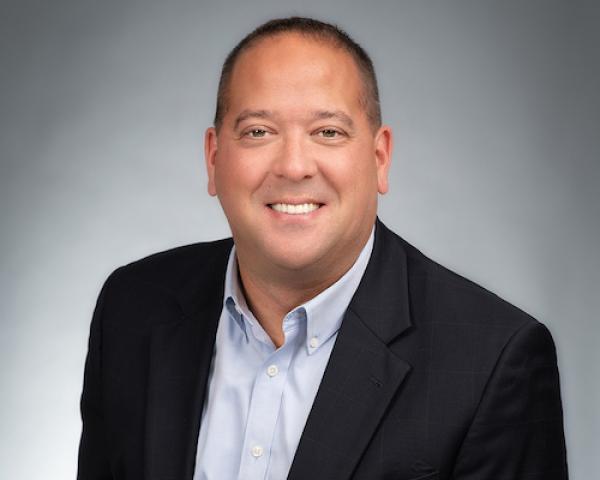Over the past year, generative AI (or GenAI) has hijacked the technology agenda in every industry—including P&C insurance. Given its ability to generate virtually any form of content based on the inputs it's trained on, a potentially endless number of GenAI use cases in P&C insurance span distribution, underwriting, claims and beyond.
The enthusiasm is palpable. Today, 59% of large insurers are actively experimenting with GenAI, with most running up to 15 different proofs of concept or early-stage prototypes. The payoff could be huge: According to McKinsey, generative AI could help unlock up to $1 trillion in annual value for the insurance industry worldwide.
Yet as the transition from conceptual to operational accelerates in the months ahead, insurers will face formidable challenges. GenAI-enabled fraud, increased government scrutiny and any number of legal complications will threaten progress. Yet many carriers will discover the most significant hurdles will stem from the practical realities of supporting and leveraging generative AI to its fullest potential.
For some, these obstacles could derail their efforts to harness GenAI to their competitive advantage. For others, the hype surrounding this technology will give way to a more pragmatic approach that enables them to make full use of what is arguably the most consequential technology of the next decade.
P&C Joins the GenAI Revolution
To understand the dynamics in play, let's start with the basics. generative AI is a subset of deep learning that leverages sophisticated algorithms to digest vast amounts of structured and unstructured data, learn patterns and generate original content—including text, audio, images, video and code. If early signs are any indication, generative AI has the potential to unleash a whole new level of human productivity.
GenAI isn't new—its foundations and the large language models (LLMs) it uses trace back to at least the 1960s. The public release of OpenAI's ChatGPT in November 2022 catapulted generative AI into the popular imagination. By December 2023, a survey found that 76% of personal lines and 79% of commercial lines carriers were either studying or piloting GenAI applications in their operations. What they're learning is eye-opening.
See also: 4 Key Questions to Ask About Generative AI
Generative AI Use Cases: Unlimited
According to Celent, 84% of senior insurance executives expect to gain a sustainable competitive edge from their investments in this technology. But that's predicated on identifying the most compelling use cases for GenAI, from transforming distribution and underwriting processes to revolutionizing claims handling and more.
Coaching or "co-piloting" agents through the sales process for complex products like cyber or summarizing submission data to streamline underwriting workflows have emerged as some of the most promising applications. So has synthetic claims analysis to identify opportunities for new lines or potential enhancements to existing ones. But as many carriers are learning, identifying advantageous use cases is one thing. Implementing the requisite infrastructure and data ecosystems to support them is another. That's where the reality check comes in.
The Critical Role of Cloud-based Infrastructure
Infrastructure considerations are paramount to leveraging generative AI's full potential. For one thing, diverse and continuously refreshed datasets are required to train GenAI for use cases throughout the insurance life cycle. As Forbes reports, a single model must often span multiple servers and accelerators to execute a trained language models that may have billions of parameters.
This level of complexity requires an average 4X improvement in hardware computing performance and a 50X increase in processing workloads. Most organizations won't have the appetite for the investments and overhead needed to support that kind of performance on their own. Nor is it likely they'll be successful if they did.
According to Deloitte, a modern, cloud-based infrastructure is required to support and scale the computational demands of GenAI applications. Insurers will need one that combines core, data and digital to integrate with and interpret data from an expanding ecosystem of data partners and make it actionable.
Governance Takes Center Stage
As the industry navigates the complexities of GenAI adoption, governance will become the linchpin in ensuring effective and responsible deployment. Establishing frameworks for data privacy, security, transparency of training data and compliance with evolving regulatory mandates will be business-critical.
In view of these needs, look for more insurers to establish centers of excellence (CoE) to oversee GenAI implementations. For each use case, the CoE must define factors such as: Who is the user? What is the user experience? What data and functionality are they permitted to access—and why?
There's also another critical dimension. Making GenAI truly effective and empowering means giving the people using it—employees, customers, partners—an understanding of how it's being used and what data serves as its inputs. In coming months, look for regional insurers to learn that, like their major carrier brethren, they must tap multiple large language models simultaneously to corroborate output details and prevent AI "hallucinations" that can reinforce biases or lead to errors.
See also: 5 Ways Generative AI Will Transform Claims
Human + GenAI: The Future of the P&C Workforce
GenAI's most promising P&C use cases should showcase another reality: This technology isn't about replacing human roles. It's about empowering them. Humans with domain expertise are needed to identify use cases and develop, test and deploy GenAI-enabled applications. A human-in-the-middle must also vet AI-produced output for factual errors and bias.
According to McKinsey, leaders must take a broad view of GenAI's capabilities and deeply consider its implications for workforce needs. Training and upskilling will be required. So might new roles such as AI trainers, interpreters and ethicists.
According to a recent study published by Harvard Business School, it's well worth the investment. Designed to measure the impact of AI on knowledge work, the study found that teams using AI completed 12% more tasks on average, completed them 25% faster and produced 40%-higher-quality results than those not using AI. Better still, workers with the lowest scores before the study saw the most significant jump (43%) in performance when they could use AI—suggesting the technology works as a skills leveler.
The Road Ahead: Embracing a Pragmatic Approach
As the industry moves forward, a checklist approach can guide insurers in refining their strategies for generative AI:
- Get Smart: Keep abreast of advances in generative AI, incorporating new insights and technologies into your strategic road map.
- Modernize Your Infrastructure: Implementing and scaling generative AI use cases isn't possible with legacy systems; if you haven't deployed a modern, cloud-based insurance platform, now is the time.
- Start Experimenting: Identify significant use cases with a clear and low-stakes path to success.
- Establish a Center of Excellence: Develop robust governance frameworks to ensure data privacy, security and regulatory compliance as new GenAI-enabled applications are introduced and scaled safely.
- Invest in Skills Development: Define and deploy training initiatives to develop the expertise and capabilities needed to deploy, manage and refine GenAI applications.
- Prepare for the Unexpected: Anticipate and plan for potential obstacles, including ethical considerations, technological complexities, evolving data requirements and market dynamics.
The transition from irrational exuberance to reality will not be easy for some carriers. But it will be necessary. With more than $1 trillion in annual value at stake, insurers that refine approaches, focus on governance and foster human-GenAI collaboration won't just safely navigate the near term—they'll shape the future of insurance.























